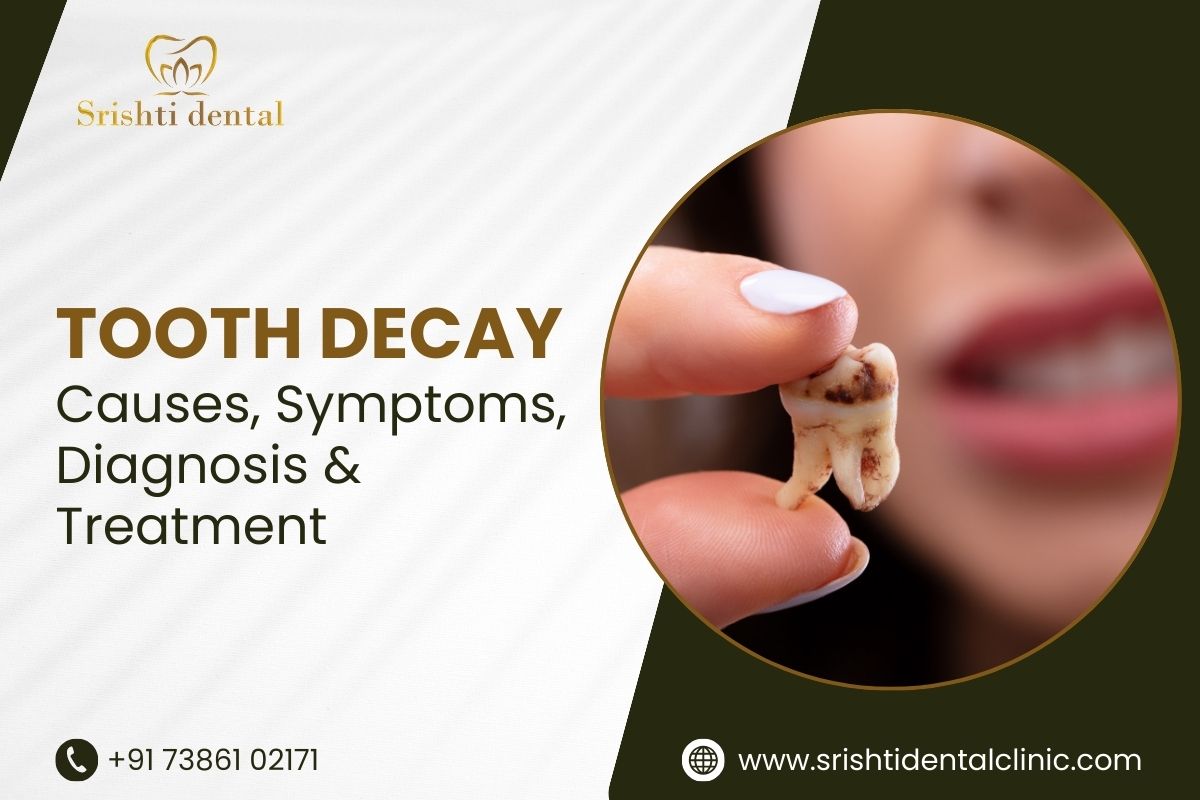Tooth Decay Causes, Symptoms, Diagnosis & Treatment
Ever wondered why dentists keep nagging about brushing and flossing? It’s because tooth decay is sneaky—it starts small but can lead to major dental problems if ignored. Certain foods, especially sugary and starchy ones, make your mouth more acidic, which can eat away your enamel and cause cavities.
If left untreated, decay can get so bad that you might need a root canal or even lose the tooth. But don’t worry! You can stop tooth decay in its tracks with proper care and early treatment. Let’s break it down.
What is Tooth Decay?
Tooth decay, also known as cavities or caries, happens when parts of your teeth get permanently damaged, creating tiny holes. The main culprits? Bacteria, sugary foods, frequent snacking, and not brushing well enough.
Signs You Might Have Tooth Decay
Not sure if you have a cavity? Here are some warning signs to look out for:
White or brown stains on your teeth
A visible hole or pit in your tooth
Sensitivity to hot, cold, sweet, or spicy foods
Toothaches
Swelling or even a fever if an infection develops

What Causes Tooth Decay?
Several things can contribute to cavities, but here are the biggest offenders:
Poor oral hygiene – Not brushing and flossing regularly lets plaque build-up, leading to decay.
Sugary and starchy foods – Sweets, bread, chips, and pasta turn into acids that attack your enamel.
Sugary drinks – Sodas, juices, and energy drinks bathe your teeth in sugar and acids.
Dry mouth – Saliva helps remove food particles and bacteria, so a lack of it increases your risk.
Smoking & tobacco – Tobacco harms your immune system, making it difficult for your mouth to fight off bacteria.
How is Tooth Decay Treated?
The treatment depends on how bad the decay is:
Fluoride treatments – Can help repair minor enamel damage and prevent cavities from forming.
Fillings – Used to fix cavities by removing decay and filling the hole with resin, gold, silver, or ceramic.
Root canals – Needed when decay reaches the pulp, removing infected tissue and sealing the tooth.
Crowns – Cover and protect root canal-treated tooth.
Tooth extraction – If a tooth is damaged, it may need to be removed to prevent further infection.
How to Prevent Tooth Decay
Good news—cavities are totally preventable! Here’s how:
Brush your teeth at least twice a day with fluoride toothpaste.
Floss daily to eliminate food stuck between your teeth.
Use a fluoride mouthwash to kill bacteria and strengthen enamel.
Cut down on sugary snacks and drinks.
Drink plenty of water, especially if it contains fluoride.
Ask your dentist about sealants, which provide extra protection against decay.
Visit your dentist at least once every six months for checkups and cleanings.
The Bottom Line
Tooth decay is common, but it doesn’t have to be a big deal if you catch it early. By taking care of your teeth now—brushing, flossing, and visiting your dentist regularly—you can prevent painful cavities and keep your smile healthy.
If you are looking for a dentist in Madhapur, then look no further than Srishti Dental Clinic for all your oral issues and a healthy smile. A little effort today will save you from big dental problems down the road!



